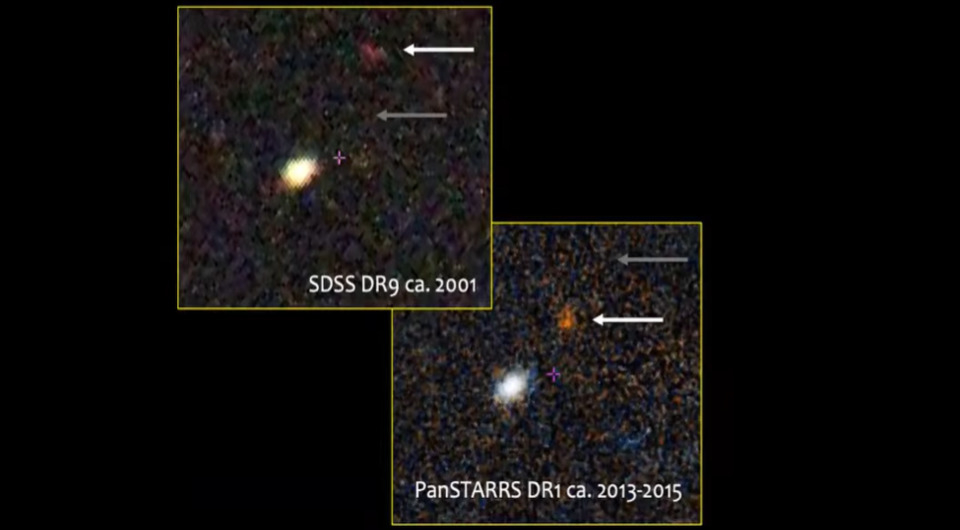Astronomers have discovered the nearest hypervelocity star to Earth. It may leave the Milky Way in the future.
Very fast and very dim
The find was made thanks to participants in the NASA-funded Backyard Worlds: Planet 9 project, which aims to search for brown dwarfs and other sub-stellar objects in the vicinity of the Solar System. Its participants view images from the WISE infrared telescope in search of moving objects. The most interesting findings are then studied by professional astronomers.

One of these objects was the star J1249+36. It attracted the attention of researchers due to its speed. According to initial estimates, it was 600 km/s. For comparison, the speed of the Sun around the center of the Milky Way is 220 km/s.
J1249+36 is 407 light-years away from Earth. It looks like a very faint reddish object in the images. Its spectrum shows traces of sodium, potassium, iron hydride, carbon monoxide, and water vapor. It has a mass of about 8% of the solar mass and an effective surface temperature of 1490 °C. So far, astronomers have classified J1249+36 as a subdwarf of spectral class L, a class of stars with very low mass and temperature. They represent the oldest luminaries in the Milky Way.
Subsequent observations have clarified that J1249+36 has a velocity of 456 km/s, which is still quite a lot. That’s enough for a star to escape the embrace of the Milky Way’s gravity and embark on an intergalactic journey.
Stellar acceleration
At the moment, astronomers have two main explanations for the anomalous speed of J1249+36. According to the first hypothesis, it was originally a companion of a white dwarf that gradually absorbed its matter. When the mass of the white dwarf passed the Chandrasekhar limit, it exploded like a supernova. This explosion may well have “catapulted” J1249+36.
According to the second scenario, J1249+36 was originally a member of a globular cluster. It is assumed that black holes with a wide range of masses were hidden in the centers of such clusters. They’re capable of forming binary systems. If a star came close to such a pair, the complex dynamics of the three-body interaction could throw it out of the globular cluster. The answer to which of these scenarios is closer to the truth may be answered by a more detailed spectral analysis of J1249+36, which will help to establish its origin.
According to today.ucsd.edu


